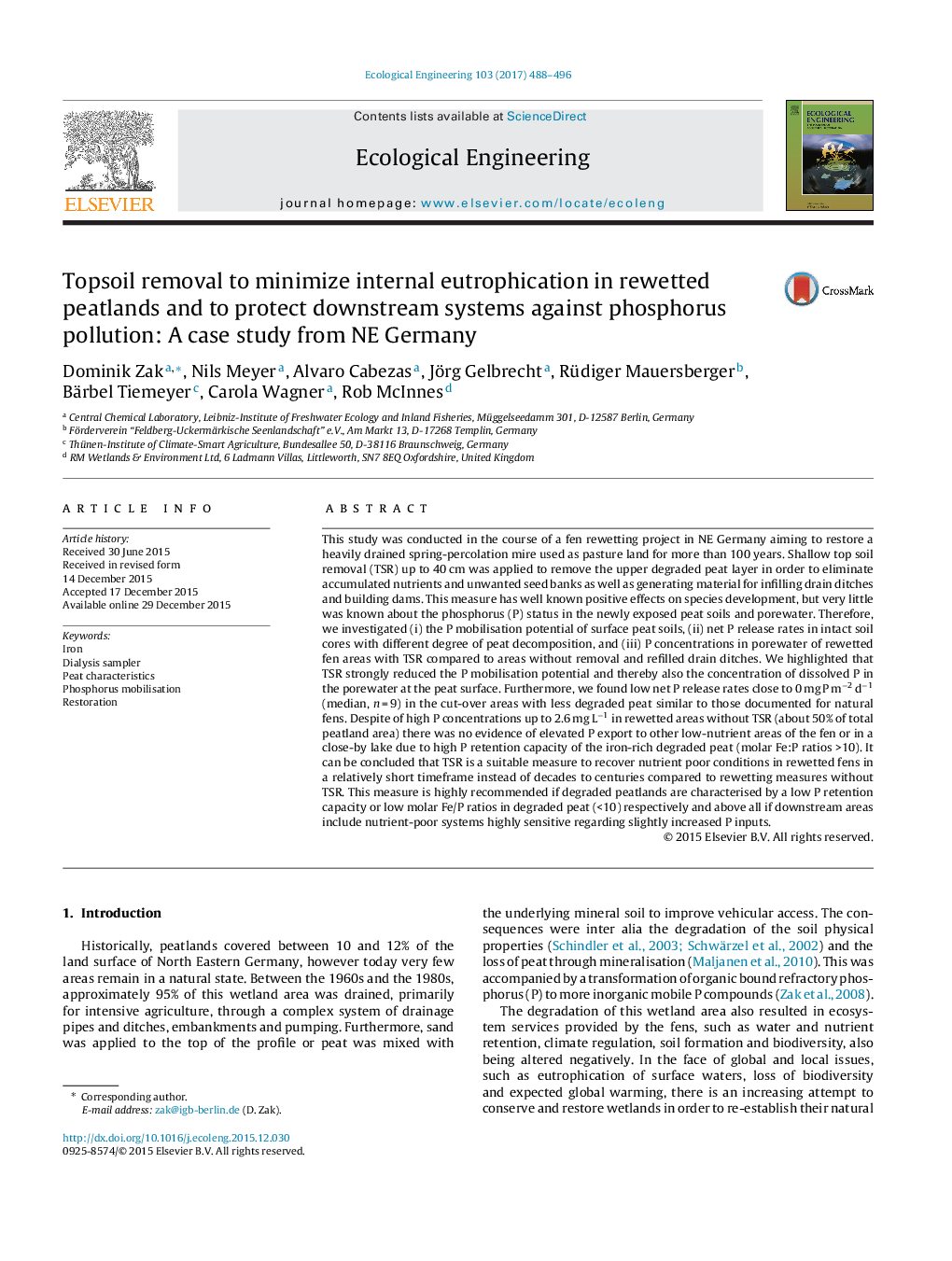| Article ID | Journal | Published Year | Pages | File Type |
|---|---|---|---|---|
| 5743903 | Ecological Engineering | 2017 | 9 Pages |
â¢Top soil removal was proven to be a suitable measure to support peatland restoration.â¢P concentrations in pore water of areas with top soil removal has been lowered up to factor 50.â¢Without top soil removal high P concentration can be expected over decades to come.â¢Top soil removal is highly recommended if downstream systems may be negatively impacted due to a slightly enhanced P export after rewetting.
This study was conducted in the course of a fen rewetting project in NE Germany aiming to restore a heavily drained spring-percolation mire used as pasture land for more than 100 years. Shallow top soil removal (TSR) up to 40 cm was applied to remove the upper degraded peat layer in order to eliminate accumulated nutrients and unwanted seed banks as well as generating material for infilling drain ditches and building dams. This measure has well known positive effects on species development, but very little was known about the phosphorus (P) status in the newly exposed peat soils and porewater. Therefore, we investigated (i) the P mobilisation potential of surface peat soils, (ii) net P release rates in intact soil cores with different degree of peat decomposition, and (iii) P concentrations in porewater of rewetted fen areas with TSR compared to areas without removal and refilled drain ditches. We highlighted that TSR strongly reduced the P mobilisation potential and thereby also the concentration of dissolved P in the porewater at the peat surface. Furthermore, we found low net P release rates close to 0 mg P mâ2 dâ1 (median, n = 9) in the cut-over areas with less degraded peat similar to those documented for natural fens. Despite of high P concentrations up to 2.6 mg Lâ1 in rewetted areas without TSR (about 50% of total peatland area) there was no evidence of elevated P export to other low-nutrient areas of the fen or in a close-by lake due to high P retention capacity of the iron-rich degraded peat (molar Fe:P ratios >10). It can be concluded that TSR is a suitable measure to recover nutrient poor conditions in rewetted fens in a relatively short timeframe instead of decades to centuries compared to rewetting measures without TSR. This measure is highly recommended if degraded peatlands are characterised by a low P retention capacity or low molar Fe/P ratios in degraded peat (<10) respectively and above all if downstream areas include nutrient-poor systems highly sensitive regarding slightly increased P inputs.
